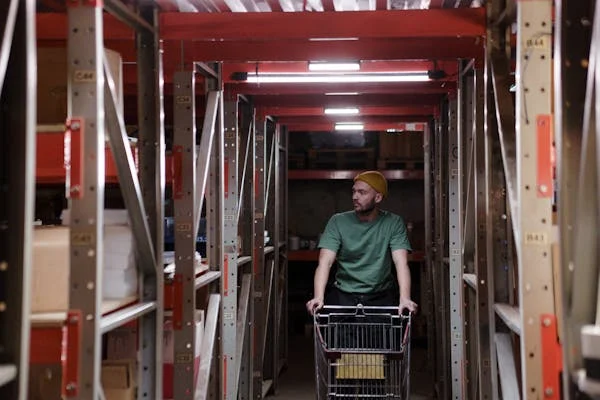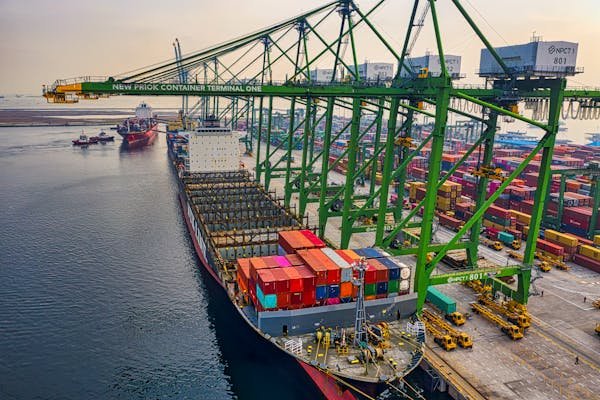Supply chain visibility is not just a fancy term—it’s a business lifeline. If you don’t know what’s happening in your supply chain, you’re probably running blind. While many companies talk about transparency, only a few actually achieve it. In this detailed guide, we’ll explore the stats that reveal how deep the problem goes and what you can do about it.
1. 62% of companies have limited visibility into their supply chain beyond Tier 1 suppliers
Why this matters
Most companies only see what their direct suppliers are doing. That’s Tier 1. But real disruptions often happen deeper—Tier 2, Tier 3, and beyond. When you only know what’s happening at the surface, you miss out on crucial warning signs. That’s like knowing your house is warm but ignoring a gas leak in the basement.
The real-world impact
Let’s say you’re a retailer. Your Tier 1 supplier says everything’s fine. But their Tier 2 supplier—who makes a key component—is facing a raw material shortage. You won’t know until it’s too late. That delay can cost you millions in missed sales and angry customers.
This limited visibility is why even big companies got caught off guard during global events like the pandemic. They had no idea what was happening two steps down the chain.
What you can do about it
Map your supply chain fully
Start with a full supply chain map. List not just your suppliers, but who they buy from too. Yes, this takes time, but it gives you real power.
Ask questions—lots of them
Make it a rule to ask your Tier 1 suppliers about their own suppliers. If they can’t give you answers, that’s a red flag.
Use visibility platforms
There are platforms designed to help you see deeper into your supply chain. Tools like Resilinc, Everstream, and Interos gather data across tiers and alert you before something breaks.
Build relationships down the chain
Don’t just talk to Tier 1. Reach out to Tier 2 and 3. Offer incentives, share forecasts, and build a collaborative network. This isn’t just smart—it’s necessary.
2. 70% of supply chain professionals believe their supply chains are extremely or very complex
Why this matters
Supply chains today are like spider webs. One tug in a remote corner can shake the whole thing. With globalization, multi-sourcing, and digital commerce, complexity has exploded.
But complexity without control is chaos. If you don’t understand your supply chain, you can’t improve it.
How complexity creeps in
You might start simple: a supplier in China, a warehouse in Germany, a customer in Texas. Then you grow. Add another supplier, two more markets, and suddenly you’re managing shipping routes, customs, weather, tariffs, and political risks across time zones.
Most businesses don’t notice the creep until things go wrong.
How to simplify the complexity
Break it into pieces
You don’t have to control everything at once. Break your supply chain into logical parts: sourcing, manufacturing, logistics, fulfillment. Treat each as a separate unit with its own goals and KPIs.
Create a digital twin
This sounds fancy, but it’s not. A digital twin is a real-time model of your supply chain. It helps you simulate different scenarios and spot where complexity causes risk. Tools like Llamasoft or Coupa can help.
Standardize your processes
Different regions often have their own ways of doing things. Standardization doesn’t mean being rigid—it means being efficient. If everyone speaks the same process language, you reduce confusion.
Make data your friend
Data helps tame complexity. Use dashboards and KPIs to track what’s going on. If you can’t measure it, you can’t fix it.
3. 80% of firms say lack of visibility is a top challenge in managing supply chains
Why this matters
Eight out of ten businesses admit they’re flying blind. That’s not a small problem—it’s a crisis.
Without visibility, you don’t know what to fix, where the delays are, or which supplier is about to fail. It’s like trying to drive a car at night with no headlights.
Why visibility is so hard
Many supply chains still run on spreadsheets, emails, and outdated systems. Data is scattered. One team uses Excel, another uses SAP, and the logistics partner has their own system. No one sees the whole picture.
Also, people are afraid to share data. Suppliers worry that being too open will lead to scrutiny or losing business.
How to solve it
Invest in real-time systems
Use cloud-based platforms that centralize your data. These systems give everyone access to the same information, whether they’re in procurement, logistics, or finance.
Make sharing safe and valuable
Encourage data sharing by making it a two-way street. Show suppliers that sharing data helps them too—by reducing delays, avoiding overproduction, and getting paid faster.
Give your teams access
Don’t restrict visibility to upper management. Make sure planners, procurement managers, and even warehouse teams can see the data they need, when they need it.
Turn visibility into decisions
Don’t collect data for the sake of it. Build dashboards that lead to action. If delivery times drop or inventory spikes, the system should recommend what to do next.
4. 41% of companies do not use any technology to monitor their supply chains in real-time
Why this matters
We live in a world where you can track your pizza delivery to the second. Yet 41% of companies can’t do the same with millions of dollars’ worth of inventory.
Real-time monitoring isn’t a luxury anymore—it’s a requirement.
The cost of staying analog
Imagine your main supplier has a delay due to a factory fire. If you only check in once a week, you might not find out until the shipment’s already late.
Without real-time tracking, issues pile up. By the time you react, it’s already too late.
What to do if you’re still offline
Start with one area
You don’t have to digitize everything overnight. Start small—maybe with inbound logistics or inventory monitoring. Then expand from there.
Use low-cost solutions first
There are simple tools like RFID, barcode scanning, and GPS trackers that can be plugged into your existing systems.
Choose tools that integrate
When you pick a real-time monitoring tool, make sure it can talk to your ERP, CRM, and other systems. You don’t want another data silo.
Train your team to respond
Real-time data is only useful if your team knows what to do with it. Build SOPs (standard operating procedures) that say, “If this happens, then do this.”
5. 57% of organizations report they have only partial visibility across their global supply chains
Why this matters
Partial visibility is like having one eye closed. You see something, but not enough to avoid danger.
This is especially risky in global operations. Different countries mean different customs rules, transportation systems, and supply chain risks.
The global visibility challenge
You might have full control over your U.S. operations but zero clue what’s happening in Asia. Delays, natural disasters, labor strikes—if you’re not watching, you’re not reacting.
Worse, different teams often use different tools. The U.K. team uses SAP, the China office uses spreadsheets, and HQ tries to make sense of it all. That leads to mismatched data and missed opportunities.
How to get global visibility
Centralize your data
Use a unified platform that everyone in the world logs into. That way, updates are instant and consistent.
Localize your playbooks
While the tools should be global, your strategies must adapt locally. Work with regional teams to create SOPs that reflect local conditions.
Add predictive analytics
Use machine learning tools that can flag risks before they happen. These tools look at weather, geopolitical trends, and supplier behavior to give you a heads-up.
Build a 24/7 monitoring culture
Global supply chains don’t sleep. You need people or systems watching around the clock. Even a small monitoring team with clear alert protocols can make a huge difference.
6. 21% of companies have full visibility into their entire supply chain
Why this matters
Only 1 in 5 companies can actually say they know what’s happening across their whole supply chain. That includes sourcing, manufacturing, distribution, warehousing, and final delivery. The rest? They’re dealing with blind spots. And blind spots are dangerous.
When you don’t have full visibility, you react instead of anticipate. You fight fires instead of preventing them. And you lose money every step of the way.
Why full visibility is rare
Supply chains are made up of different players—each with their own systems, processes, and priorities. Getting everyone to agree on one version of the truth is hard.
Plus, many companies grow quickly without building scalable infrastructure. Visibility takes a backseat to sales and expansion. By the time problems show up, it’s a mess to untangle.
What full visibility looks like
You should be able to:
- See raw material stock levels at the supplier’s plant
- Monitor production timelines at overseas factories
- Track shipments in real-time, across all legs of transport
- Know your inventory status across every warehouse and fulfillment center
- Forecast demand and align supply with minimal lag
This doesn’t happen by chance. It takes intention.
How to get there
Create a visibility blueprint
Lay out what full visibility means for your business. What systems need to connect? Which data points matter most? Where are the gaps today?
Invest in interoperability
Your systems don’t all need to be replaced—but they do need to talk to each other. Use APIs and integration tools to bridge your platforms.
Make visibility part of supplier contracts
Don’t just ask suppliers to deliver on time—ask them to deliver data too. Make reporting part of the contract and tie it to performance metrics.
Build a culture of transparency
Even the best tools won’t help if your people hoard data. Encourage open sharing across teams and reward those who contribute to clearer visibility.
7. 33% of companies say improving visibility is their top supply chain priority
Why this matters
When one-third of companies rank visibility as their number one priority, you know the industry is shifting. Visibility isn’t just a “nice to have” anymore. It’s at the heart of how competitive companies operate.
This shift tells us that leaders are waking up. They realize that without visibility, efficiency, cost control, and customer satisfaction all suffer.
What’s driving this priority shift?
- Disruptions like COVID-19, trade wars, and port closures have exposed vulnerabilities
- Customer demands for faster, more accurate delivery keep rising
- Sustainability and compliance requirements demand better tracking and reporting
- AI and automation need real-time data to function properly
Visibility is the foundation for modern supply chain management. Without it, you’re building on sand.
How to turn this priority into progress
Set visibility goals
Don’t just say you want visibility—define what it means. Is it 90% track-and-trace coverage? 100% inventory accuracy? Align on clear KPIs.
Create a cross-functional task force
Visibility isn’t just a supply chain issue. It involves procurement, IT, operations, and finance. Bring them together with a clear mission and authority.
Audit your current tools
Look at what tech you’re using today. What connects well? What’s a black box? Clean out the noise and double down on tools that offer real-time insights.
Benchmark quarterly
Check progress every 90 days. Are lead times shrinking? Are delays decreasing? Celebrate wins and quickly fix weak links.
8. 76% of firms with high visibility report better customer service performance
Why this matters
Good customer service doesn’t just come from smiling reps or helpful emails—it starts way back in the supply chain. When your internal operations are smooth, your customers feel the difference.
The stat is clear: companies with better visibility deliver better service. That’s because they avoid stockouts, ship on time, and resolve issues quickly.
What better service actually looks like
- Fewer missed delivery windows
- More accurate order tracking
- Faster response times when things go wrong
- Clear communication from order to delivery
These things create trust. And trust keeps customers coming back.
How visibility powers better service
Real-time order tracking
When your team knows where every shipment is, they can answer customer queries confidently—and update them proactively if there’s a delay.
Demand forecasting accuracy
With upstream visibility, you can predict stock needs better and avoid backorders. That’s especially crucial for eCommerce and retail.
Automated alerts and rerouting
When a disruption hits, visibility tools can trigger alerts and suggest reroutes—so you can act before your customer even notices a problem.
What to do today
Get customer service and supply chain talking
These teams often work in silos. Bridge the gap. Give service teams access to tracking tools and inventory systems so they can answer faster.
Use visibility in marketing
If you can deliver with precision, say it loud. Make it part of your brand promise. People love knowing what to expect—and that they’ll get it on time.
Review service complaints with a supply chain lens
Go through the last 100 customer issues. How many were caused by delays, missing stock, or misinformation? Fix those roots, not just the symptoms.
9. 47% of disruptions are not discovered until after they affect the business
Why this matters
Almost half of all supply chain issues are invisible until it’s too late. That’s like finding out you have a leak only after your ceiling collapses.
This kind of reactive management is costly. It creates fire drills, missed deadlines, and unhappy customers.
Why disruptions go unnoticed
- No real-time tracking tools in place
- Siloed data across departments and partners
- Poor communication between supply chain tiers
- Over-reliance on manual checks and periodic reports
When something breaks, it takes hours—or even days—for someone to notice. And by then, the damage is done.
How to detect problems earlier
Implement real-time dashboards
Have a live dashboard that shows key supply chain health indicators: inventory levels, delivery status, supplier performance. It should update hourly—not weekly.
Set up automated alerts
Use thresholds and triggers. If a shipment is delayed more than 3 hours, or inventory drops below a buffer level, the system should ping you immediately.
Run “what-if” simulations regularly
Use your planning tools to simulate different disruption scenarios—like a supplier going offline or a port closing. That way, you’re prepared with a Plan B.
Get proactive with suppliers
Don’t wait for them to raise the flag. Create a culture where they notify you early about delays or shortages. Incentivize transparency with better contracts or faster payments.
10. 49% of firms admit to poor visibility into Tier 2 and 3 suppliers
Why this matters
You might know what your main supplier is doing. But what about their suppliers? And their suppliers? Nearly half of companies don’t have that insight.
This deep-tier blindness is risky. That’s where many issues—especially ethical, environmental, or geopolitical—are hiding.
What’s hiding in the lower tiers
- Use of conflict minerals or unethical labor practices
- Insecure IT systems that could open you to cyberattacks
- Overreliance on a single source for a key component
- Factories located in politically unstable regions
Any of these can disrupt your business or damage your reputation.
How to uncover your extended supply chain
Map your entire supplier network
Ask your Tier 1s to disclose their own suppliers. Use surveys, interviews, and onboarding processes to collect the data. It won’t be perfect at first—but something is better than nothing.
Use third-party tools for deep-tier insight
Platforms like Sourcemap and Interos specialize in mapping and monitoring deep supply chain tiers. They can identify concentration risks and track supplier health metrics.
Incorporate risk scoring
Rate each supplier—direct and indirect—on things like financial stability, location risk, ethical compliance, and cybersecurity posture. This gives you a heatmap of where to focus.
Make deep visibility part of your sustainability efforts
Consumers care about where products come from. Investors care too. Use deep-tier visibility to back up your ESG claims and reporting.
11. 87% of organizations consider visibility a critical capability for supply chain success
Why this matters
When nearly 9 out of 10 businesses agree that visibility is crucial, you know it’s more than just a trend. It’s the backbone of a healthy, responsive, and cost-effective supply chain.
The reason? Visibility gives you control. It helps you stay one step ahead, instead of two steps behind.
Why visibility matters more than ever
Today’s world is unpredictable. Natural disasters, global pandemics, strikes, port shutdowns, and trade policy shifts can all hit your supply chain without warning. If you can’t see what’s happening, you can’t respond in time.
Also, customers expect updates. B2B buyers want ETAs. Consumers want tracking. Without visibility, you fail to meet those expectations.
What does “critical capability” really mean?
It means visibility isn’t just nice to have—it’s necessary to:
- Plan accurately
- Reduce waste
- Increase service levels
- Manage risk
- Improve agility
- Drive down costs
Every part of your supply chain gets better with visibility.
What should you do if you’re behind?
Get executive buy-in
Make sure leadership understands that visibility isn’t just a supply chain issue—it’s a business advantage. Tie visibility to company-wide goals like cost savings, ESG compliance, or customer satisfaction.
Make it part of your digital transformation
If you’re investing in automation or analytics, visibility tools should be a core piece of that stack.
Build KPIs around visibility
Track metrics like % of shipments with full tracking, % of supplier responses within 24 hours, or % of orders with real-time status. Make visibility measurable.
Focus on speed, not just clarity
Seeing is good, but reacting fast is better. Set up workflows that let your team respond to what the data is telling them, right away.
12. 58% of supply chain executives say data silos hinder visibility
Why this matters
More than half of supply chain leaders face a huge barrier: data silos. That means their data lives in separate places—spreadsheets, local drives, outdated systems, or different business units—and doesn’t talk to each other.
It’s like having puzzle pieces from five different boxes. You can’t see the full picture.
Where silos come from
- Different departments using different tools
- Mergers and acquisitions leading to multiple systems
- Legacy software that doesn’t integrate
- Fear of sharing data across teams
Even companies with strong data collection practices can fall into this trap. It’s not about volume—it’s about connection.
The cost of silos
Silos lead to bad decisions. Procurement might overorder because they don’t know what’s in the warehouse. Logistics might reroute a shipment without telling sales.
And when problems hit, it takes days to gather data from every team just to figure out what happened.
How to break down silos
Adopt one data platform, or connect your existing ones
You don’t always need to rip and replace. Use middleware or integration platforms to unify your systems. Look for tools with APIs and strong compatibility with ERP, WMS, and TMS platforms.
Create a supply chain data governance team
Appoint a small team that owns the data strategy across departments. Their job is to ensure consistency, accessibility, and accuracy across systems.
Develop a central data lake
If you can’t unify your apps, create a central data repository where all data flows. Then use dashboards to visualize insights in one place.
Celebrate sharing wins
Make it a cultural thing. Publicly recognize teams that break the silo mindset. Show how shared data leads to better decisions.
13. 72% of companies plan to invest in visibility-enhancing technologies
Why this matters
Investment signals intent. When nearly three-quarters of companies say they’re putting money into visibility tools, it shows that the business world sees a real return on these investments.
Tech is no longer optional. Without it, you’re left behind. But spending alone isn’t enough—you need to spend smart.
What kind of technologies are we talking about?
- Real-time tracking systems for freight and inventory
- Supply chain control towers that unify data from multiple sources
- Predictive analytics that flag risks before they become disruptions
- Supplier collaboration platforms that share forecasts and data
- IoT and RFID for asset tracking at every step
These aren’t future ideas—they’re here now.
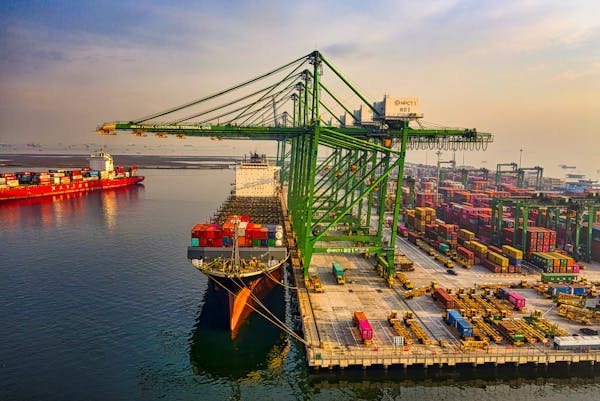
Where should your investment go?
Start with your biggest pain point
Is your issue with late shipments? Unknown inventory? Unreliable suppliers? Start there. Don’t try to do everything at once.
Choose scalable tools
Look for platforms that grow with you. You don’t want to switch tools in a year because your business outgrew your tech.
Train your people
Tech without adoption is wasted money. Make training part of your rollout plan. Show teams how visibility tools make their jobs easier, not harder.
Build around user experience
A beautiful dashboard means nothing if nobody uses it. Involve end users in tool selection. Choose systems with intuitive design and mobile accessibility.
14. 67% of firms with end-to-end visibility reduced lead times by more than 10%
Why this matters
Lead time is the clock that never stops ticking. The longer it takes to get your product from supplier to shelf, the more you pay in storage, lost sales, and frustrated customers.
If visibility cuts lead time by 10% or more, you’re saving money—fast.
Why visibility shortens lead times
- You catch problems early and reroute
- You plan production better
- You avoid last-minute firefighting
- You coordinate better across partners
It’s not just speed—it’s confidence. You stop padding timelines “just in case” because you know what’s happening.
How to reduce your lead time with visibility
Track order milestones
Break down every order into stages—order received, processed, shipped, delivered. Monitor delays at each stage and address the root cause.
Automate order updates
Stop chasing status updates manually. Automate check-ins, alerts, and reminders. That saves time and keeps everyone informed.
Use shared calendars with suppliers
Align schedules with your partners. Let them see your forecast, inventory levels, and planned promotions. That helps them prepare better and reduce fulfillment time.
Build digital twins
A digital twin helps you simulate scenarios—what happens if this supplier is late? What if demand spikes? Use this to identify bottlenecks before they happen.
15. 54% of manufacturers struggle to gain real-time supply chain insights
Why this matters
Manufacturers are the engine of the supply chain. If they can’t see what’s going on in real time, the whole machine stutters.
Real-time insight isn’t just helpful—it’s required for lean manufacturing, just-in-time models, and fast-changing customer demands.
The gaps manufacturers face
- They often depend on outdated ERP systems that lack live updates
- Production lines run on schedules made days or weeks in advance
- Supply disruptions go unnoticed until parts run out
- Customers change order volumes last minute, and manufacturers can’t respond fast enough
How to bring real-time insight into your factory
Integrate machines and systems
Use sensors, IoT, and edge computing to collect data from machines, conveyors, and workstations. Feed this into a central control tower.
Link planning and execution systems
Your demand planner and factory floor scheduler should use the same data. That keeps plans grounded in real conditions.
Enable dynamic re-planning
When conditions change—a part is delayed, an order is cancelled—your system should adjust automatically. That helps you stay agile without chaos.
Share real-time dashboards across departments
Don’t keep live data just for engineers. Let sales, logistics, and customer service see what’s happening. This improves coordination and avoids surprises.
16. 79% of companies say real-time data is key to achieving visibility
Why this matters
When almost 8 out of 10 companies agree that real-time data is the foundation of visibility, it shows a clear direction. You can’t claim to have true visibility if the data you’re working with is outdated.
Delayed information leads to delayed action. In a fast-moving supply chain, even a few hours can make a massive difference.
Why real-time data changes the game
Let’s say a shipment is delayed. If you know in real time, you can reroute, adjust customer expectations, or increase production elsewhere. If you find out two days later, you’re dealing with angry customers and stockouts.
Real-time data enables decisions, not just reports.
Where to apply real-time visibility
- Inbound logistics to track shipments from suppliers
- Production floors to monitor inventory use and machine status
- Warehousing to track movement and restocking needs
- Outbound logistics to follow last-mile deliveries and carrier delays
How to build real-time capability
Invest in live data systems
Choose platforms that collect, process, and display data instantly. Your WMS, TMS, ERP, and CRM should all update in real time.
Use IoT and sensors
IoT tools can provide live data on temperature, location, humidity, shock, and more. This is especially important for perishable or sensitive goods.
Centralize alerts
Don’t have five systems sending alerts to five inboxes. Use a central dashboard where alerts are prioritized and linked to action steps.
Set thresholds for intervention
Not all data needs your attention. Define what matters—delays beyond 2 hours, temp spikes beyond 5 degrees, order drops below 80%. Let the system flag only what really needs a response.
17. 43% of respondents say they rely on manual processes for supply chain tracking
Why this matters
In a world where automation is everywhere, nearly half of companies still track supply chains with spreadsheets, phone calls, and emails. This slows things down, increases errors, and creates risk.
Manual work is prone to delays and miscommunication. Worse, it doesn’t scale.
What manual processes look like
- A planner emails the warehouse to confirm inventory
- A customer service agent calls the carrier to check shipment status
- A buyer tracks supplier deliveries on a spreadsheet
- Reports are updated once a week, then shared over email
This might work in a small business, but not in a global supply chain.
The risks of staying manual
- Delays in communication lead to missed deadlines
- No single source of truth—data exists in many versions
- Human error can cost thousands or even millions
- You can’t react quickly when things go wrong
How to replace manual tracking
Automate low-hanging tasks first
Start with order tracking, inventory updates, and shipment notifications. These have the biggest impact and quickest ROI.
Use cloud platforms
Cloud-based tools let everyone see the same data instantly. Updates happen in real time, and remote teams stay in sync.
Digitize communication with suppliers and partners
Instead of email threads, use portals or shared dashboards where updates are logged and tracked.
Train staff to embrace change
Manual habits are hard to break. Provide training and support to help teams move to digital systems. Show them how it saves time, not adds complexity.
18. 60% of firms report an inability to track inventory across multiple locations
Why this matters
Inventory is your money sitting on a shelf. If you don’t know where it is, how much you have, or whether it’s moving, you’re guessing with your business.
Six out of ten firms struggle to get this basic information across all their warehouses, distribution centers, and retail sites. That’s a huge blind spot.
Why tracking gets difficult
- Systems don’t sync between locations
- Inventory updates are delayed or manual
- Local teams use different processes or metrics
- Returns and damaged stock aren’t reported in real time
Even large companies lose money this way—overordering one product, understocking another, and paying more for emergency shipping.
How to fix multi-location tracking
Use a unified inventory management system
Choose a tool that can track every location in real time. Your warehouse in Ohio and your partner DC in Mexico should show up on the same screen.
Automate stock movements
Use scanners, RFID tags, or mobile devices to update stock levels as they move. This reduces errors and updates your system instantly.
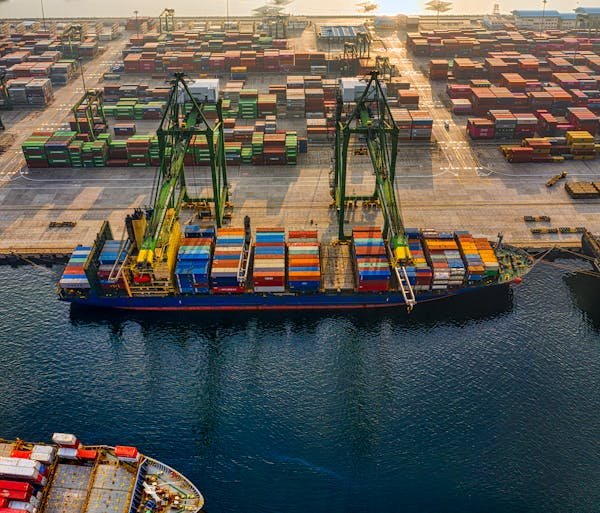
Enable mobile dashboards
Let operations managers check inventory status from anywhere. Visibility shouldn’t require logging into five systems.
Build a replenishment strategy
Don’t wait until stock is low to react. Use demand forecasts and real-time usage data to trigger automatic replenishment before there’s a shortage.
19. 36% of logistics professionals lack visibility into shipping exceptions and delays
Why this matters
More than a third of logistics experts don’t know when things go wrong during shipping—until a customer complains or a delivery fails. That’s bad for business and reputation.
Shipping exceptions can include:
- Late pickups
- Border delays
- Damaged freight
- Reroutes
- Vehicle breakdowns
If you can’t see these in real time, you can’t fix them fast.
What happens without exception visibility
- Missed delivery windows
- Expedited shipping costs to recover from delays
- Angry customers with no updates
- Rejected loads at docks
It’s not just a logistics issue—it affects sales, service, and finance too.
How to gain better exception tracking
Use carrier-integrated systems
Many carriers now offer APIs or portals that show delay data. Integrate these into your TMS so exceptions appear automatically.
Enable geo-fencing and GPS tracking
Real-time tracking lets you know when a vehicle has stopped too long or gone off-route. That helps flag issues before they become disasters.
Automate customer updates
If there’s a delay, your system should notify the customer without manual input. This reduces service calls and boosts trust.
Review root causes
Track which carriers or routes cause the most exceptions. Use this data to optimize your shipping strategy or renegotiate contracts.
20. 66% of businesses experienced a supply chain disruption in the past year
Why this matters
Two-thirds of companies had their supply chains disrupted last year. That’s not a risk—it’s a guarantee. If you’re not prepared, you’re vulnerable.
Disruptions come in all shapes:
- Supplier bankruptcy
- Natural disasters
- Port closures
- Strikes
- Cyberattacks
- Demand spikes
And they don’t just cost money—they damage relationships and brand reputation.
Why disruptions are so common
Supply chains today are global, complex, and interdependent. One failure in a remote region can affect dozens of businesses.
Also, lean models and just-in-time strategies mean there’s little buffer. A small hiccup becomes a big issue fast.
How to prepare for disruption
Map your supply chain risk
Know where your suppliers are located. Identify political, environmental, and economic risks by region.
Build redundancy into sourcing
Don’t rely on one supplier or one region. Dual-source when possible. Even 70/30 splits reduce risk.
Create playbooks for common disruptions
Have predefined steps for when a key route is blocked, or a supplier fails. This speeds up response time.
Monitor news and alerts
Use tools that scan for real-time global disruptions. The sooner you know, the better you can react.
21. 85% of companies with advanced visibility tools say they respond faster to disruptions
Why this matters
Speed is everything in the world of supply chains. The faster you can respond to an issue, the smaller its impact. That’s why 85% of companies that have strong visibility tools say they respond faster—because they’re not wasting time trying to figure out what’s wrong.
They already know.
What faster response actually looks like
- Re-routing a shipment before it misses a deadline
- Switching suppliers when one falls short
- Letting customers know about delays before they have to ask
- Adjusting production or inventory in real time
Fast response reduces costs, protects revenue, and saves customer trust.
How visibility makes quick reactions possible
Live alerts and dashboards
The moment something goes wrong, the system notifies the right people. That’s way better than digging through emails or waiting for a phone call.
Predictive analytics
Advanced tools use past data to spot trouble early. They might not stop the storm, but they’ll help you bring an umbrella before it hits.
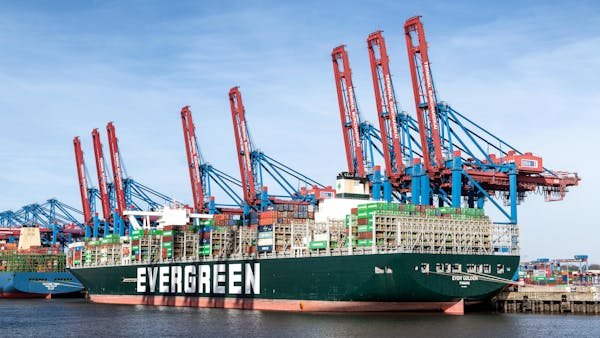
Integrated communication
When systems and partners are all connected, there’s no delay in sharing updates. Everyone knows what’s happening and what to do.
What you can do today
Choose one high-impact area
Start with freight, supplier delays, or warehouse issues—whatever hits you the hardest. Invest in a visibility tool there first.
Set a goal for response time
Maybe you want to reduce your average disruption response time from 12 hours to 3. Make that the goal and track progress.
Do monthly disruption drills
Test your team. Simulate common disruptions and see how long it takes to recover. These drills uncover process gaps before real issues strike.
22. 90% of supply chain leaders say visibility improves risk management
Why this matters
Risk is part of every supply chain. From natural disasters to supplier bankruptcy, something can always go wrong. The key is not to eliminate risk—it’s to see it coming and reduce the damage.
That’s why 90% of leaders link visibility to risk management. Because if you can’t see the risk, you can’t act on it.
What kinds of risk visibility helps with
- Operational risks like delayed shipments or machine breakdowns
- Supplier risks like financial instability or non-compliance
- Geopolitical risks like trade restrictions or civil unrest
- Environmental risks like floods, wildfires, and storms
- Cybersecurity risks from vulnerable systems in your network
Visibility connects the dots so you can take action before the problem grows.
How to use visibility for smarter risk management
Score suppliers on risk
Use data to rank each supplier on criteria like location, financial health, compliance, and delivery reliability. Focus extra attention on those with high risk scores.
Visualize your exposure
Use heatmaps and dashboards to track where you’re exposed. This helps you focus on the regions or partners that could bring the most disruption.
Track disruptions globally
Use AI-based tools that scan news, weather, and trade feeds for possible disruptions. When something looks risky, get an alert and a recommendation.
Build buffers and backups
Visibility helps you know when and where to add backup suppliers, emergency inventory, or rerouting options. It turns risk planning from a guess into a strategy.
23. 48% of businesses are unable to track supplier compliance in real time
Why this matters
Compliance isn’t just about ticking boxes—it’s about protecting your business from legal issues, reputation damage, and failed partnerships.
When nearly half of companies can’t track whether their suppliers are meeting quality, safety, or ethical standards in real time, it means they’re exposed.
And in today’s market, customers and investors are watching too.
What real-time compliance tracking means
- Knowing if your suppliers are following labor laws and environmental guidelines
- Being alerted when a supplier’s certification expires
- Tracking whether raw materials meet your quality standards
- Seeing audit results or issues as soon as they happen
Without this, you might find out about a problem only when it hits the news—or your customer’s inbox.
How to close the compliance visibility gap
Digitize your audits and certifications
Use software that lets suppliers upload certifications, and alerts you before they expire. Make audits visible and track corrective actions in real time.
Use compliance dashboards
Set up views by supplier, region, or compliance type. This helps you manage thousands of requirements without being overwhelmed.
Automate compliance scorecards
Track quality incidents, missed SLAs, and audit failures in one place. Use this to rate supplier reliability and escalate concerns.
Tie compliance to performance reviews
Make supplier compliance part of how you evaluate them. This shows it’s not optional—it’s essential.
24. 55% of firms experience delays due to lack of visibility into upstream suppliers
Why this matters
More than half of supply chain delays can be traced back to not knowing what’s happening upstream. That’s a problem you can solve—if you start looking deeper.
Upstream means the suppliers of your suppliers. The component makers. The chemical refiners. The people two or three steps removed from you, but critical to your operation.
What upstream visibility gives you
- Early warnings when Tier 2 or Tier 3 suppliers are in trouble
- Insight into shortages before they affect production
- Ability to switch sources before your line stops
- Clearer understanding of lead time risks
You’re not waiting for your Tier 1 supplier to tell you there’s a delay—you’re finding out yourself.
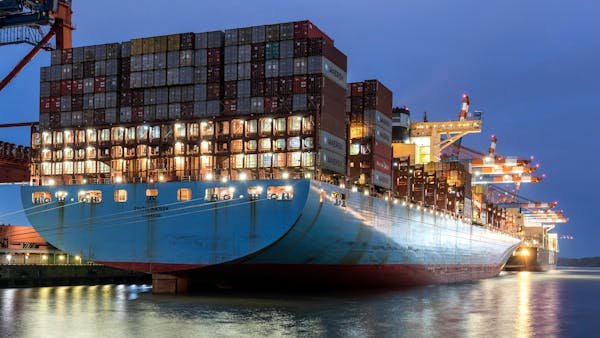
How to go upstream with visibility
Map your extended supplier network
Don’t stop at Tier 1. Ask your key partners who their suppliers are, and where they’re located. Build a visual map and keep it updated.
Use third-party monitoring tools
Some platforms specialize in deep-tier visibility. They track global risk, vendor connections, and financial health across extended networks.
Get upstream partners to participate
Offer access to dashboards or joint tools. Explain how sharing info helps everyone. Some may need incentives, like faster payments or preferred terms.
Monitor lead times by source
Even if you don’t manage Tier 2 directly, track how long parts take from their origin. Spikes or slowdowns often signal trouble you need to dig into.
25. 61% of companies say they need better tools for supply chain collaboration
Why this matters
Visibility without collaboration is only half the puzzle. Knowing what’s going on is good. But being able to act together, with partners and internal teams, is where the real power lies.
Yet most companies—more than 6 in 10—say their tools don’t let them collaborate well enough. That creates gaps, delays, and frustration.
Where collaboration breaks down
- Teams using different systems that don’t talk to each other
- Suppliers getting updates by email instead of shared platforms
- Lack of shared forecasts or demand signals
- Manual document sharing (like Excel over email) leading to version confusion
These aren’t just technical problems—they create real inefficiencies.
How to improve supply chain collaboration
Use shared platforms, not just emails
Choose systems that let you and your partners work in the same space. See shared forecasts, submit changes, and track performance in one place.
Create multi-user workflows
Instead of handing off tasks, build flows where people can work together. For example, procurement, logistics, and finance can all weigh in on a shipment change.
Give visibility to external partners
Suppliers, 3PLs, and manufacturers should see what affects them—production plans, delivery dates, quality expectations. The more they know, the better they can perform.
Make collaboration a KPI
Track how often plans are adjusted collaboratively vs reactively. Measure time to resolve exceptions, or percentage of shared forecasts used. These help turn collaboration into a habit.
26. 32% of firms claim to have visibility into inbound and outbound logistics
Why this matters
Only about one-third of companies say they can clearly see both sides of their logistics process—from goods coming in to products going out. That leaves the other two-thirds at risk of costly delays, poor customer service, and inventory chaos.
Inbound visibility helps you prepare production and warehousing. Outbound visibility keeps your customers informed and happy. You need both to run a reliable supply chain.
What poor logistics visibility looks like
- Not knowing when shipments will arrive at your facility
- Losing track of containers in transit
- Calling carriers to check delivery status
- Missing delivery windows without knowing why
- Customers asking “Where’s my order?” before you even know it’s late
When this happens often, you lose time, money, and credibility.
How to improve both inbound and outbound visibility
Integrate with your logistics partners
Ask your carriers and freight forwarders for access to their real-time tracking data. Many offer APIs that plug into your systems.
Standardize tracking practices
Use consistent tools for all shipments. Whether inbound or outbound, you should be able to track by PO, container, or shipment ID—no matter the mode or carrier.
Set up centralized dashboards
Use a logistics control tower or TMS platform that tracks every movement across modes, routes, and legs of the journey. That way, you’re never guessing.
Provide customers with visibility too
Let your customers track orders just like they would with a parcel delivery. Real-time updates build trust and reduce support requests.
27. 77% of enterprises are increasing budgets for supply chain transparency tools
Why this matters
Most companies aren’t just talking about visibility anymore—they’re funding it. That shift in budget priorities shows how serious the visibility gap is, and how much companies are willing to invest to fix it.
Money going into visibility means companies are looking to protect themselves from risk, serve customers better, and streamline operations.
What transparency investments cover
- Real-time tracking and monitoring platforms
- Supplier onboarding and risk assessment systems
- Analytics and dashboards for planning and performance
- ESG and compliance data tools
- Integration of ERP, WMS, and TMS platforms
These tools aren’t just for tech companies. Retailers, manufacturers, logistics providers—everyone needs better transparency.
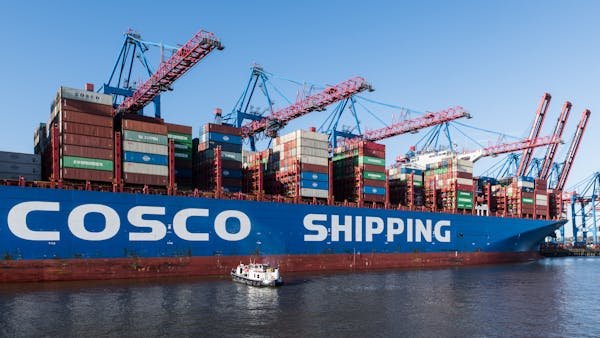
Where to spend your budget wisely
Focus on integration first
Before buying new tools, make sure your current ones are talking to each other. Often the problem isn’t lack of tech—it’s lack of connection.
Buy scalable, not flashy
Look for platforms that grow with you. It’s better to start with core functionality and build over time than to over-invest in features you won’t use.
Choose vendors who understand your industry
Generic tools might look nice, but industry-specific platforms often provide better support and faster results.
Set clear ROI goals
Every visibility investment should tie back to measurable outcomes—fewer disruptions, better service levels, lower cost per order. Know what success looks like.
28. 39% of businesses say visibility is a primary driver for digital transformation
Why this matters
Digital transformation is a big phrase—but behind it is a simple truth: businesses want to work smarter. And nearly 4 in 10 say visibility is the reason they’re going digital in the first place.
That’s because without visibility, digital systems can’t perform. AI, automation, forecasting—they all rely on real-time, accurate data.
How visibility fuels digital change
- Gives your systems the live data they need to make fast decisions
- Connects siloed departments and suppliers with shared tools
- Powers automation—because systems can’t act unless they know
- Provides the reporting backbone for ESG, performance, and compliance
Visibility isn’t the side dish—it’s the foundation of transformation.
How to build digital transformation on visibility
Start with a visibility audit
Look at where your data lives today, how current it is, and who can see it. That forms your baseline for change.
Pick one process to digitize first
For example, automate your inbound shipment tracking or digitalize your supplier onboarding process. Success here creates momentum.
Make visibility the north star
Let visibility guide your digital roadmap. Choose projects that remove blind spots and improve responsiveness.
Tie transformation to team wins
Don’t talk only about tech. Show how digital tools will help planners plan better, buyers buy smarter, and logistics teams avoid chaos.
29. 50% of supply chain costs could be reduced with greater visibility
Why this matters
This stat is massive. If you could cut half your supply chain costs by improving visibility, would you wait?
The savings come from smarter planning, fewer disruptions, lower inventory levels, less expediting, and better supplier management. Visibility helps you stop wasting money.
Where the cost savings come from
- Reducing excess inventory by matching supply with demand
- Avoiding emergency shipments and expedited fees
- Catching disruptions before they turn into shutdowns
- Sourcing more strategically based on performance data
- Using assets more efficiently—fewer empty trucks, better space usage
In short, visibility helps you run lean without being risky.
How to actually save through visibility
Track cost per order or shipment
Visibility gives you the data to calculate true landed costs. Then you can fix inefficiencies and renegotiate based on facts.
Use forecasts that adjust in real time
Static forecasts waste money. Visibility allows dynamic forecasting that reacts to demand shifts and supplier updates.
Optimize transport with live routing
Use real-time route optimization tools to avoid empty miles, reduce delays, and lower fuel costs.
Do exception-based planning
Instead of reviewing every order, focus only on the ones with issues. That saves time and reduces decision fatigue.
30. 46% of companies use outdated or legacy systems that limit supply chain transparency
Why this matters
You can’t build visibility on a weak foundation. Nearly half of companies are stuck using systems that were built for another era—before real-time data, before integration, before global risk.
These systems slow everything down. They create silos, require manual workarounds, and fail to support today’s needs.
What legacy systems can’t do well
- Share data in real time
- Connect with modern platforms or apps
- Provide mobile or remote access
- Support automation and alerts
- Handle global complexity and supplier diversity
They might still “work,” but they’re holding you back.
How to move on from legacy systems
Start with a needs analysis
Don’t rush to replace everything. List what your current systems can’t do, and match that with business needs.
Prioritize based on risk and value
Upgrade systems that affect customer service, risk response, or cost control first. That’s where ROI is fastest.
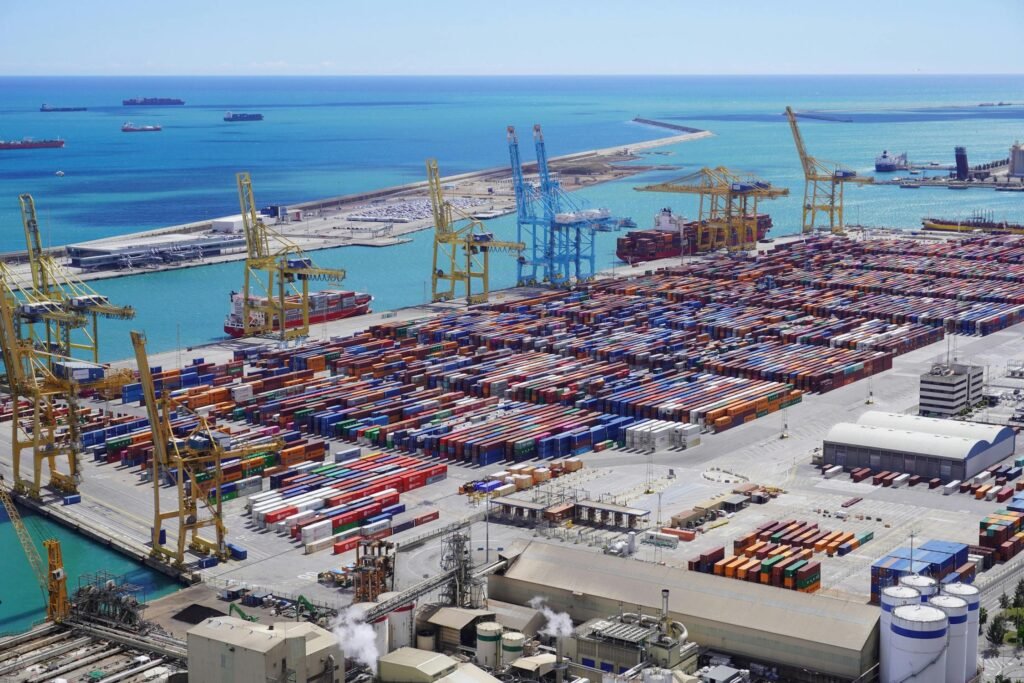
Use APIs and middleware as a bridge
If full replacement is too much, use tools that help old and new systems work together. It’s not perfect, but it buys you time.
Involve your people in the change
Legacy systems often have loyal users. Get their input, listen to their needs, and show how the new tools will help—not hurt—their daily work.
Conclusion
Supply chain visibility isn’t just a trend—it’s a transformation. Across all 30 stats, one message comes through loud and clear: companies that see clearly, win consistently.
They respond faster, serve better, spend less, and grow stronger.
You don’t need to do everything overnight. Start where it matters most. Choose one blind spot, one risk, or one team. Build visibility there. Then expand.









